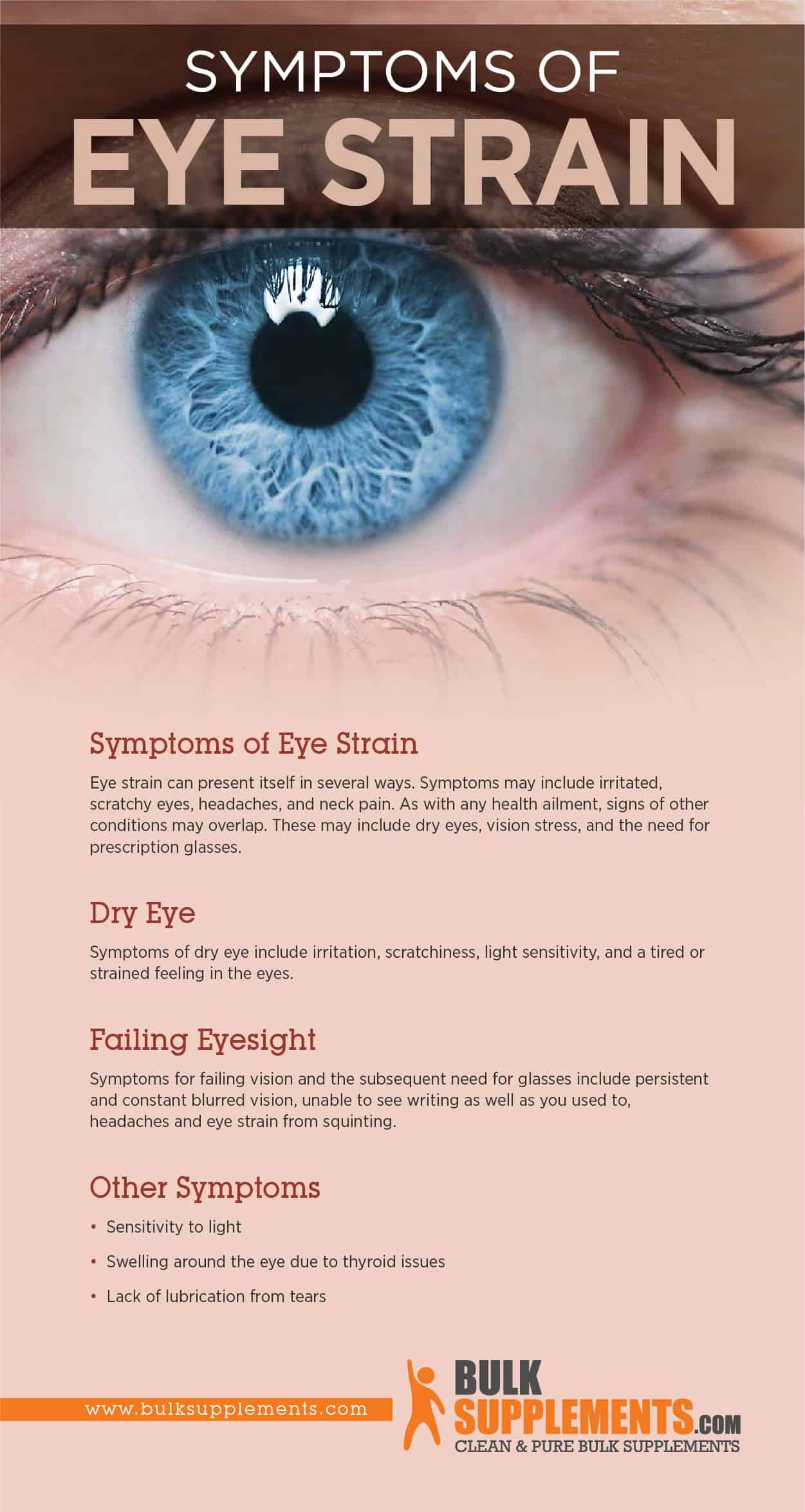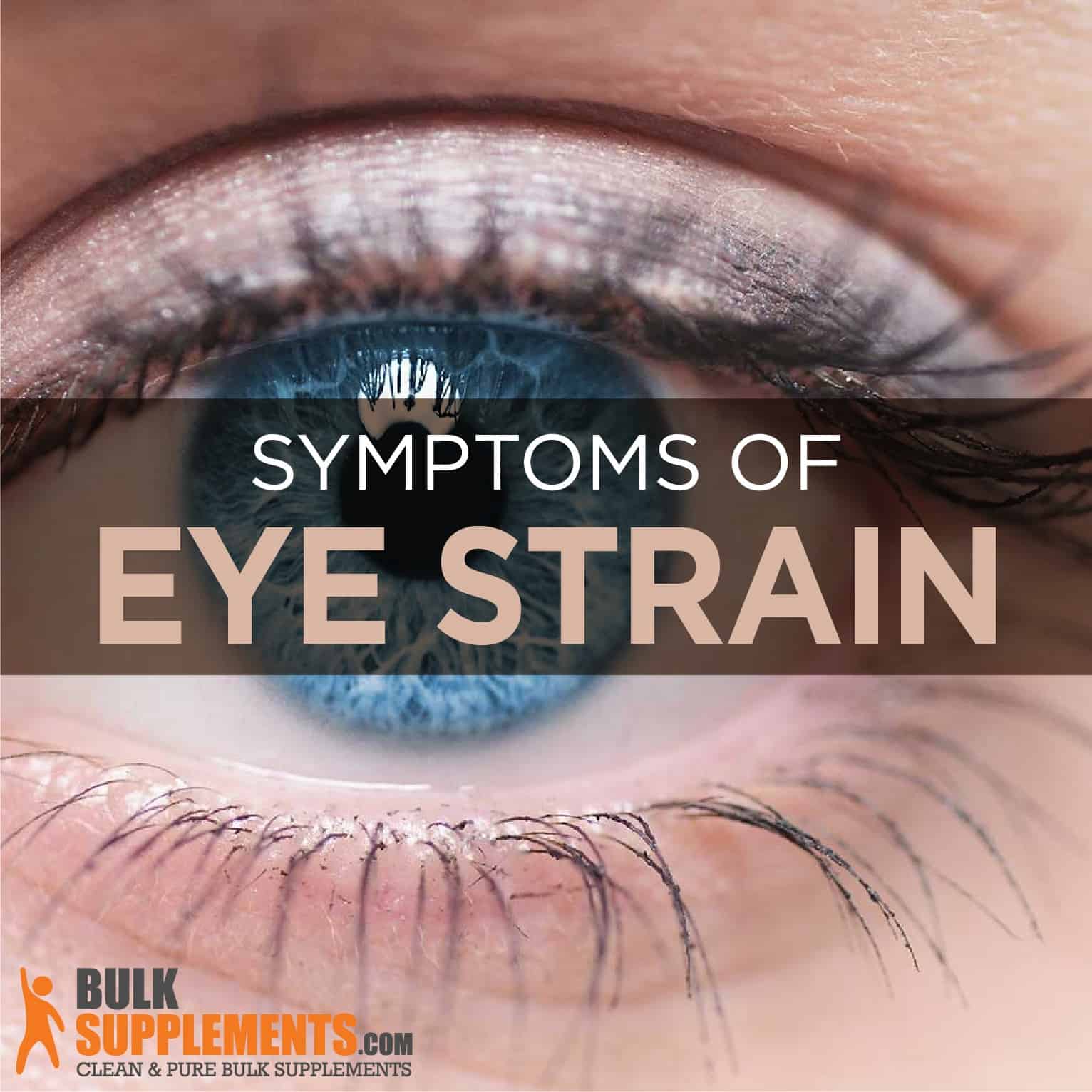What is Eye Strain?
Smartphones, tablets, computers, and smartwatches help you live a more organized life, but they cause an enormous strain on your eyes. These electronic devices help us work, play, exercise, monitor our home, and communicate. Insidiously, people of all ages and cultures depend on their “tech toys” with adverse effects on their eyes. All that technology you use, however, can lead to health issues, such as eye strain. This condition is digital eye strain (DES) or computer vision syndrome and is prevalent worldwide. More than half of computer users may suffer from its symptoms. (x)
Eye strain, also known as asthenopia (meaning “weak eye condition”), results from tired or strained eyes. The negative impact of constant computer use on the eyes surfaced over 20 years ago as “computer vision syndrome.” It means if you work at a computer all day, you need to compensate for the strain on your eyes. (x)
You are at risk of developing and suffering from eye strain because you are at your computer most of the day, along with the fact that you might spend an excessive amount of time on tablets, smartphones or laptops away from work. (x)
If you have frequent headaches and blurry vision, you may suffer from eye strain. Eye strain may begin with headaches and then progress to pain behind the eyes. You may notice your vision becomes blurred or a sudden inability to focus your eyes on your work.
Human Resources in most businesses help their employees regulate their computer time with the 20-20-20 rule. Take the twenty-second break to view something 20 feet away every 20 minutes. Some place a timer on their computer to remind them every 20 minutes. This coming more into practice proves eye discomfort in the workplace is prevalent and an issue of concern. (x)
Symptoms of Eye Strain
Eye strain can present itself in several ways. Symptoms may include irritated, scratchy eyes, headaches and neck pain. As with any health ailment, signs of other conditions may overlap. These may include dry eyes, vision stress and the need for prescription glasses. Other indications of eye strain include:
- Dry Eye
Dry eye symptoms include irritation, scratchiness, light sensitivity, and a tired or strained feeling in the eyes.
- Failing Eyesight
Symptoms for failing vision and the subsequent need for glasses include persistent and constant blurred vision, unable to see writing as well as you used to, headaches and eye strain from squinting. (x)
Other Symptoms of Eye Strain include:
- Sensitivity to light (x)
- Swelling around the eye because of thyroid issues
- Lack of lubrication from tears
Causes of Eye Strain
The common cause of eye strain stems from too much time in front of a computer screen, tablet, or smartphone. The average American spends between eight and ten hours looking at a computer screen per day, whether television, computer, tablet or smartphone. (x) However, there are also non-digital causes. These can include:
- Age
- Smoke
- Migraines
- Sinus infections
- Allergies
- Some medications
- Long drives as the driver

Treatment of Eye Strain
Creating a proactive solution for your eye strain now means your overall eye health may stabilize and improve. These straightforward solutions for eye strain will help, but you have to benefit by doing them. Such actions include:
- Prescription glasses
Blue-light blocking glasses worn alone or over glasses may eliminate your eye symptoms. Research has proved wearing these glasses improves visual application and sleep quality, easing eye fatigue while conserving your overall eye health. (x) (x)
- Adjust Computer
Adjust your computer so that your eyes are 2 to 3 inches from the top, and you don’t have to turn your head. It also includes lighting conditions, location of reference materials and the use of breaks. (x)
- Use Anti-glare Screen
Request or purchase an anti-glare screen for your computer, which fits over the screen and reduces the glare.
- Don’t Face the Window
Do not place your computer in front of a window, as natural sunlight can create extra glare and strain the eyes.
- Work With Even Brightness
Adjust the brightness of the computer monitor. The purpose is to eliminate the contrast between the brightness of your screen and the area behind it. Working with uneven brightness may cause vision issues and headaches — squinting and fatigue. The overall idea is to work in equal brightness concerning the screen and the area behind the screen. (x)
- Practice Blinking Exercises
An optometrist can prescribe blinking exercises to do each day to help combat the pain and other symptoms. A study performed with ten patients proved that blinking exercises decreased dry eye symptoms and improved gland function. (x)
- Warm Compress
A simple heat compress for the eyelids will help with your dry eyes and eye fatigue. The heat not only feels comforting, but it also positively influences the meibomian gland around the rim of your eye — prevents evaporation of your eye’s tear film. Take it a step further and do a little bit of massage, light pressure. (x)
- Change Contact Lenses
Change your contact lenses if you wear them and are having eye strain issues.
- Give Yourself a Break
Take a break. As mentioned earlier, follow the 20-20-20 rule while on your device. Set a timer on your computer. Every 20 minutes, look away from the screen for at least 20 seconds. Aim for a spot across the room or about 20 feet away. (x)
- Get Enough Sleep
Get adequate sleep. A loss of sleep wreaks havoc on your body and can also affect your eyes. It can cause eye pain, dry eyes, eye spasms, and difficulty focusing and blurry vision. (x) A study performed on 16 participants proved that lack of sleep affected their visual watching. (x)
- Adjust Your Chair
Adjust your office chair as it lessens the stress on your whole body, including your eyes. Sit with your feet on the floor and have the mouse and keyboard within easy reach. (x)
- Place Documents Near Your Monitor
If you are typing or frequently looking at books or papers as you type, try placing a document holder next to the monitor, so you can easily view the document. Continually looking up and down is difficult on your eyes. The holder can prevent this from occurring.
Supplements for Healthy Eyes
Several supplements can help maintain healthy eyes and good vision, including:
- Lutein
Lutein and zeaxanthin work together to filter the light associated with computers and cell phones. Leafy greens are a substantial source of these compounds, and the recommended daily dosage is 5-6 mg each day. This powerful combination also helps prevent other eye issues. (x)
- Omega-3 Fatty Acids
Omega-3 fatty acids help add moisture to the eyes and keep the retina healthy. (x) These fatty acids are in oils, nuts, seeds, and fish. The dosage amounts vary according to age, gender, and diet, so it is best to consult your doctor about the recommended dosage.
- Vitamin E
Vitamin E is in nuts, sweet potatoes, and cereal. The body does not naturally produce vitamin E, so we must rely on supplements or food sources to get enough of it. Vitamin E helps with cataracts, macular degeneration and even maintains healthy cells in the eye. (x)
- Vitamin C
Vitamin C is in citrus fruits, bananas, apples, tomatoes, and other vegetables. This vitamin helps maintain healthy eyes and teeth, and high doses have shown to slow down macular degeneration. (x) Vitamin C helps cells in the eye function correctly.
- Vitamin A
Your eyes need vitamin A to function properly. If you are deficient, it may cause eye strain. A study performed on 1600 people proved vitamin A deficiency caused eye strain and other health concerns. (x) You can get vitamin A from fish, dairy products, carrots, cantaloupe, broccoli and squash. (x) As a supplement, take 35 mg a day or as recommended by your caregiver.
- Zinc
Zinc helps your body bring vitamin A from the liver to your eyes’ retina. That way, they can produce melanin, the protective pigment of the eyes. For food sources, try seafood, red meat, nuts and seeds. (x) Take 340 mg per day as a supplement or as recommended.
Consult your health care provider before adding any supplements to your diet, especially if you are nursing or pregnant.
Where to Buy Supplements for Eye Strain?
You can purchase these powders and supplements for your eye strain at BulkSupplements.com. The company is an industry-leading manufacturer and distributor of pure dietary supplements.
BulkSupplements.com is not just a consumer brand. It also supplies pure ingredients to other food and supplement brands to make their products. All products at BulkSupplements.com are manufactured and tested according to current and proper manufacturing practices.
Are you interested in trying any of these powders or supplements mentioned in this article as a possible solution to helping you with eye strain symptoms? Contact BulkSupplements.com to place an order today.
The Bottom Line
Eye strain, also known as asthenopia (meaning “weak eye condition”), results from the eyes being fatigued or strained. People who are at risk of developing and suffering from eye strain would be those who work at a computer all day, along with people who spend an excessive amount of time on tablets, smartphones or laptops.
Symptoms may include irritated, dry, scratchy eyes, headaches and neck pain, and blurred vision. Treatment of eye strain ranges from adjusting the height and brightness of the computer screen and getting prescription or blue-light blocking sunglasses to avoiding direct sunlight while working and getting enough sleep. Daily blinking exercises and warm compress with a light massage also help. Supplements that help maintain healthy eyes and prevent eye strain include lutein, omega-3 fatty acids, vitamin C, and vitamin E.
These statements have not been evaluated by the Food and Drug Administration. These products are not intended to diagnose, treat, cure or prevent any disease.


